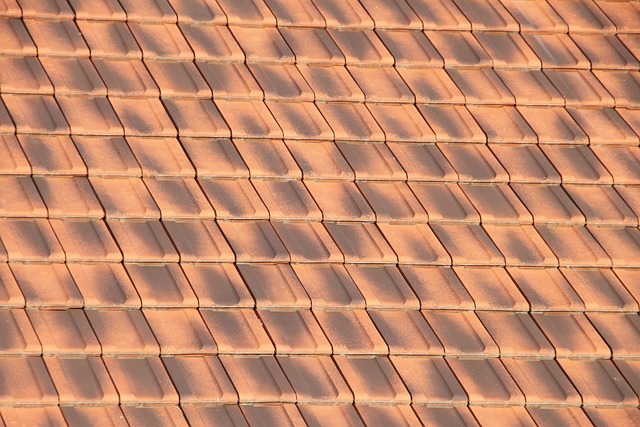Solar-integrated roof designs, featuring reflective paints and tiles, offer an energy-efficient solution for urban buildings. By reflecting heat and reducing thermal absorption, these cool roofs lower cooling costs and mitigate the urban heat island effect, enhancing livability and sustainability. Reflective coatings on traditional roofing materials and innovative solar panels embedded in roofs are cost-effective and visually appealing solutions. Proper installation, including optimal placement and regular cleaning, ensures maximum efficiency over time, aligning with global sustainability goals.
In today’s quest for energy efficiency, cool roofs are emerging as a game-changer. By reflecting heat rather than absorbing it, these innovative roofing solutions offer significant cooling cost savings and reduced environmental impact. This article explores the benefits of cool roofs, delving into their technology, design options like solar-integrated roof designs, available materials, installation best practices, and the long-term value they bring to buildings and the planet.
Understanding Cool Roofs and Their Benefits
Cool roofs are designed to reflect heat and reduce the amount of thermal energy absorbed, providing an efficient way to lower building energy consumption. This concept is especially beneficial in urban areas with high-density construction, known for their “heat island” effect, where asphalt and concrete absorb and retain heat. By using cool roof materials like reflective paints, tiles, or membranes, buildings can significantly decrease their cooling costs. These solar-integrated roof designs not only reduce the demand for energy-intensive air conditioning but also contribute to environmental sustainability by lowering greenhouse gas emissions.
The benefits extend beyond financial savings; cool roofs play a crucial role in mitigating climate change. By reflecting sunlight, they help to offset the urban heat island effect, making cities more livable and reducing strain on local power grids. With proper installation, these innovative roof systems can provide long-term solutions for energy efficiency, ensuring buildings remain comfortable and cost-effective to operate even during extreme weather conditions.
Solar-Integrated Roof Designs: A Modern Approach
Solar-integrated roof designs are a modern approach that seamlessly blends aesthetics and functionality. These innovative systems incorporate photovoltaic cells or solar panels directly into roofing materials, eliminating the need for separate solar arrays on top of traditional roofs. By integrating solar technology into the roofing structure, these designs offer both energy efficiency and visual appeal.
This method allows homeowners and businesses to generate clean energy while reducing cooling costs significantly. The reflective nature of many solar-integrated roof materials helps to dissipate heat, making buildings more energy-efficient during warmer months. This modern approach to roofing is not only sustainable but also contributes to a building’s overall design, creating unique and visually striking facades that stand out in today’s architectural landscape.
Types of Cool Roof Materials
Cool roofs are designed to reflect sunlight and heat, helping to keep buildings cooler and reducing the need for air conditioning. There are several types of cool roof materials available, each with unique properties and benefits. One popular option is reflective coatings that can be applied to traditional roofing materials like asphalt or concrete. These coatings are highly effective at reflecting solar radiation, making them a cost-effective solution for energy efficiency.
Another type of cool roof material incorporates solar-integrated roof designs, which seamlessly blend thermal insulation with photovoltaic (PV) panels. This innovative approach not only reduces cooling costs but also generates electricity from the sun. The reflective properties of these materials help to mitigate the urban heat island effect, making them especially beneficial for cities and densely populated areas.
Installation Considerations for Optimal Performance
When considering installation of cool roof materials, it’s crucial to align them with your region’s climate and specific architectural design. For optimal performance, integrate solar-responsive features seamlessly into your roof design rather than simply adding a reflective coating. This could involve using materials that offer both insulation and reflectivity, ensuring proper placement for maximum sunlight exposure during the hottest parts of the day, and designing for efficient heat dissipation.
For instance, some cool roofs incorporate photovoltaic tiles or panels that generate electricity while reflecting heat, creating a synergistic effect. Proper flashing and sealing around these components is vital to maintain their effectiveness and prevent leaks. Additionally, regular cleaning to remove dust or debris buildup is essential, as this can reduce the reflective properties of the roof over time.
Long-Term Savings and Environmental Impact
The long-term savings associated with cool roof materials are significant, offering a substantial reduction in energy costs over time. By reflecting heat and minimizing indoor temperature rise, these roofs lower the demand for air conditioning, which is a major contributor to high energy bills. This simple yet effective strategy can lead to considerable financial savings for homeowners and commercial property owners alike.
Beyond economic benefits, solar-integrated roof designs have a positive environmental impact. They contribute to mitigating the urban heat island effect, where urban areas experience higher temperatures than their rural surroundings. By keeping buildings cooler, these roofs reduce the strain on local energy grids and lower greenhouse gas emissions. This eco-friendly approach aligns with global efforts to create more sustainable and resilient urban environments.
Cool roofs represent a significant step towards sustainable building practices, offering not just reduced cooling costs but also a path to mitigating environmental impact. As we’ve explored, understanding the benefits of reflected heat and incorporating innovative solutions like solar-integrated roof designs can significantly improve energy efficiency. By choosing the right cool roof materials and ensuring proper installation, property owners can enjoy long-term savings while contributing to a greener future. This modern approach to roofing is not just a trend but a necessity for today’s environmentally conscious world.
